Selling Size: Single Plant | 4″ Pot Included
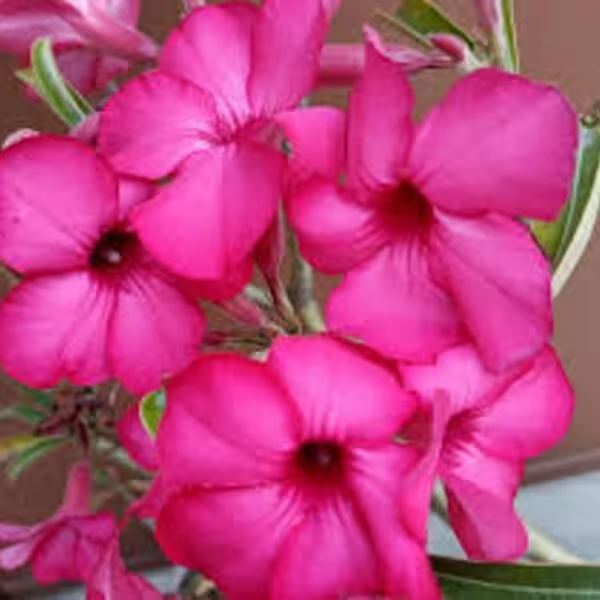
Adenium plants, also known as Desert Roses, are popular for their swollen caudex (the thickened base of the stem), attractive flowers, and relative ease of care, especially in warm climates like India. Here’s a detailed guide to Adenium plant care:
1. Light:
- Adeniums thrive in full sunlight, needing at least 6 hours of direct sun daily.
- In India, they will appreciate being outdoors in a sunny spot.
- Insufficient light can lead to leggy growth, weak stems, and reduced flowering.
- If kept indoors, place them near a south or west-facing window where they receive the most light. You might need to supplement with grow lights if natural light is insufficient, especially during shorter winter days.
- While they love sun, be mindful of intense afternoon sun during peak summer, which can sometimes scorch the leaves. Some light afternoon shade might be beneficial in extremely hot regions.
2. Watering:
- Adeniums are succulents and store water in their caudex, making them drought-tolerant.
- The most crucial aspect of watering is to avoid overwatering, which can lead to root rot, a common and fatal problem.
- Adopt a “soak and dry” watering method. Water thoroughly until water drains from the bottom of the pot, and then allow the soil to dry out completely before watering again.
- During the active growing season (spring and summer in India), you may need to water more frequently, possibly every few days to once a week, depending on the weather, pot size, and soil mix. Check the soil moisture by inserting your finger about an inch deep; if it feels dry, it’s time to water.
- Reduce watering significantly during the dormant season (winter). Water sparingly, perhaps once a month or even less, just enough to prevent the caudex from shriveling excessively. The plant may lose its leaves during this time, which is normal.
- Ensure your pot has good drainage holes to prevent waterlogging. You can even tilt outdoor pots during the rainy season to help excess water drain away.
3. Soil:
- Adeniums need a well-draining soil mix to prevent root rot.
- A cactus or succulent potting mix is ideal. You can further improve drainage by adding perlite, pumice, or coarse sand to the mix (aim for at least one-third of the mix to be these materials).
- Avoid soils that retain too much moisture, such as heavy clay-based soils.
- Using terra cotta pots is often recommended as they are porous and allow for better aeration and faster drying of the soil compared to plastic or glazed pots.
4. Temperature and Humidity:
- Adeniums thrive in warm temperatures, ideally between 20°C to 35°C (70°F to 95°F). They are well-suited to the tropical and subtropical climate of India.
- They are not frost-tolerant and need protection from temperatures below 10°C (50°F). If temperatures drop significantly in your region during winter, bring potted Adeniums indoors to a warm, bright location.
- Adeniums prefer low to moderate humidity, typical of drier climates. High humidity can increase the risk of fungal diseases, especially if combined with poor air circulation. Ensure good airflow around the plant.
5. Fertilizer:
- Feed your Adenium during the active growing season (spring and summer) to encourage growth and flowering.
- Use a balanced liquid fertilizer diluted to half the recommended strength, or a fertilizer with a higher phosphorus content to promote blooming (e.g., NPK ratio like 5-10-5 or similar).
- Fertilize every 2-4 weeks during the growing season.
- Stop fertilizing during the dormant winter period when the plant’s growth slows down. Some sources suggest a very weak fertilizer application in mid-winter if the plant is kept indoors, but it’s generally not necessary.
6. Pruning and Shaping:
- Pruning can help to shape the plant, encourage branching, and remove any dead or leggy growth.
- The best time to prune is typically in late winter or early spring, just before the start of the active growing season. You can also do light pruning or pinching during the growing season to maintain shape and encourage more flower-producing branches.
- Use clean and sharp pruning shears. Make cuts at a slight angle just above a leaf node (the point where a leaf grows from the stem).
- Be aware that Adenium sap is toxic and can cause skin irritation. Wear gloves when pruning and avoid touching your face. If sap oozes from the cut, you can wipe it away and apply a fungicide powder (like cinnamon powder) to the cut surface to prevent infections.
- Pruned branches can sometimes be used for propagation through cuttings.
7. Dormancy:
- Adeniums naturally go through a dormant period in winter when temperatures cool and day length decreases.
- During dormancy, they may lose their leaves, and growth will slow down significantly or stop.
- Reduce watering and stop fertilizing during this time.
- Keep the plant in a frost-free location with minimal watering.
- Once warmer temperatures return in spring and new growth begins to appear, gradually increase watering and resume fertilization.
8. Repotting:
- Repot your Adenium every 1-2 years, or when
- Choose a pot that is only slightly larger than the previous one. Adeniums don’t need very large pots. Ensure the new pot has good drainage.
- When repotting, you can gently tease out any circling roots. You can also raise the caudex slightly above the soil line when replanting to showcase its unique shape.
- Use a fresh, well-draining potting mix.
- Wait a few days after repotting before watering to allow any damaged roots to heal and reduce the risk of rot.
9. Pests and Diseases:
- Adeniums are generally resistant to many pests and diseases when grown in proper conditions.
- Overwatering is the primary cause of most problems, leading to root rot and fungal infections. Ensure proper drainage and allow the soil to dry out between waterings.
- Common pests that can occasionally affect Adeniums include spider mites and mealybugs. Inspect your plant regularly for any signs of infestation. These can usually be controlled with insecticidal soap or by manually removing them.
- Fungal leaf spots or powdery mildew can occur in humid conditions or with poor air circulation. Improve airflow and treat with an appropriate fungicide if necessary.
10. Toxicity:
- All parts of the Adenium plant, especially the sap, are toxic if ingested and can cause skin irritation. Keep plants away from children and pets. Wear gloves when handling or pruning the plant and wash your hands thoroughly afterward.
By following these care tips, you can enjoy the beauty of your Adenium plant for many years in the Indian climate. Remember that observing your plant and adjusting your care routine based on its specific needs and the local environmental conditions is key to its health and flowering.
Only logged in customers who have purchased this product may leave a review.


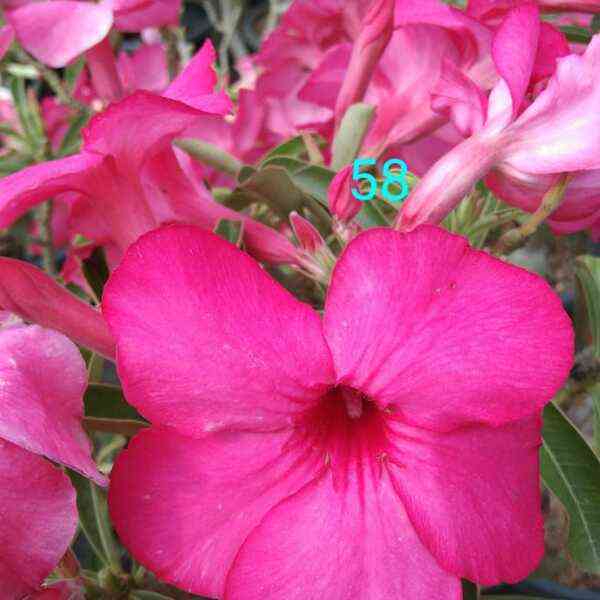
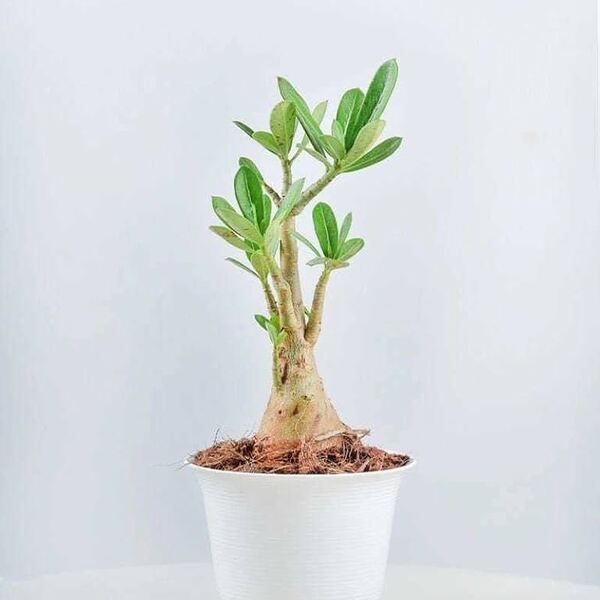


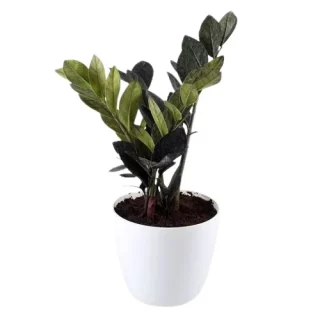

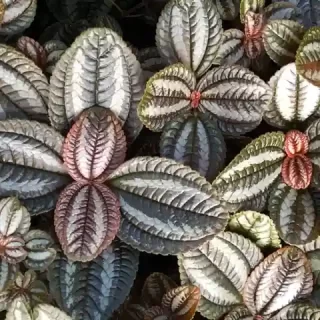

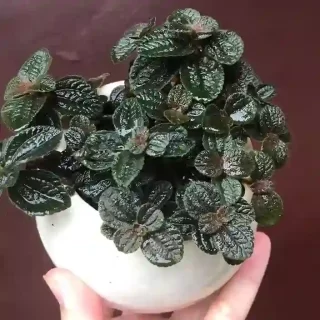
 If you need any assistance, I'm always here. Have you found what you were looking for?
If you need any assistance, I'm always here. Have you found what you were looking for?
Reviews
There are no reviews yet.